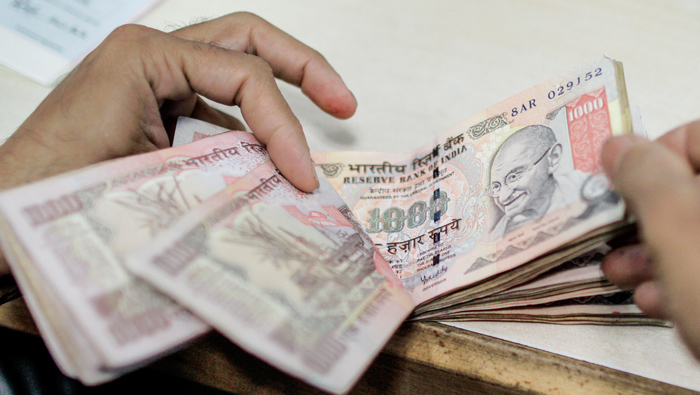
Mumbai: India’s foreign-exchange (forex) reserves climbed to a record as the rupee heads for its biggest monthly advance in two years.
The currency stockpile rose by $2.54 billion in the week through March 18 to an unprecedented $355.95 billion, a Reserve Bank of India (RBI), India’s central bank, statement showed on Friday. That capped a third straight week of increases.
The rupee has jumped 2.7 per cent in March as India’s government stuck to its fiscal goals in last month’s budget and investor sentiment toward emerging markets improved amid efforts by global central banks to support growth. That’s helped pare the Indian currency’s 2016 drop to 0.7 per cent, Asia’s worst performance.
The rise in reserves provides RBI governor Raghuram Rajan more ammunition to shield the region’s third-largest economy from capital outflows amid the possibility of further interest-rate increases by the United States Federal Reserve and any risks from the slowdown in China.
A gauge of the rupee’s expected price swings has dropped 69 basis points this month and Edelweiss Financial Services says a stable currency will aid central bank efforts to control inflation and give it more room to lower borrowing costs.
“With record reserves in hand, the RBI is in a much more comfortable position to counter any bouts of volatility,” said Ankur Jhaveri, co-head of currencies and rates at Edelweiss Financial in Mumbai. The central bank will cut the benchmark repurchase rate by 25 basis points at its April 5 meeting, he said.
The rupee was little changed from March 23 at 66.63 a dollar in Mumbai, according to prices from local banks. Indian markets were shut on Thursday and Friday for public holidays. The currency’s rally this month follows a 0.9 per cent decline in February and a 2.4 per cent slide in January.
The central bank has “taken the opportunity to re-accumulate reserves when sentiment turned positive toward the rupee,” said Khoon Goh, a senior currency strategist at Australia & New Zealand Banking n Singapore. The RBI had also taken action during January-February, when the rupee was under depreciation pressure, resulting in a decline in reserves for the period, he said.
The rupee sank to an all-time low of 68.85 a dollar in August 2013 after the Fed’s signal to withdraw monetary stimulus led to an exodus of foreign funds from emerging markets. It has since rebounded 3.3 per cent. India’s foreign-exchange reserves surpassed a previous all-time high seen in June 2015 and have jumped about 29 per cent since Rajan took charge at the central bank in September 2013.
Foreign funds have bought a net $2.58 billion of Indian stocks this month, paring outflows for 2016 to $288 million, data shows. Overseas holdings of rupee-denominated government and corporate debt have risen Rs24.7 billion ($371 million) after last month’s withdrawals of Rs87.6 billion that were the biggest since April 2014.
Sovereign bonds were steady on Monday, with the yield on notes due in January 2026 at 7.51 per cent, according to prices from the RBI’s trading system.